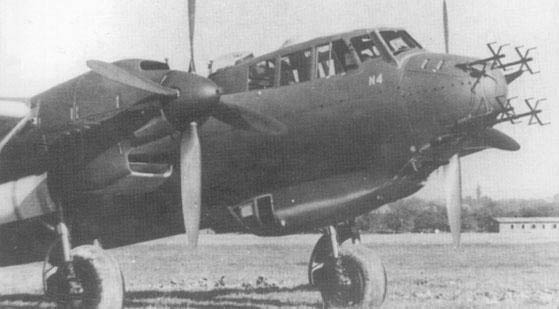
The Dornier Do 217 was a bomber used by German Luftwaffe during World War II as a more powerful version of the Dornier Do 17, known as the Fliegender Bleistift (German: "flying pencil"). Designed in 1937 and 1938 as a heavy bomber, its design was refined during 1939 and production began in late 1940. It entered service in early 1941 and by the beginning of 1942 was available in significant numbers. The Dornier Do 217 had a much larger bomb load capacity and had much greater range than the Do 17. In later variants, dive bombing and maritime strike capabilities using glide bombs were explored in depth with considerable success in the later role. Early Do 217 variants were more powerful than the Heinkel He 111 and Junkers Ju 88, having a greater speed, range and bomb load. Owing to this it was designated a heavy bomber rather than a medium bomber. The Do 217 served on all fronts in all roles. On the Eastern Front and Western Front it operated as a strategic bomber, torpedo bomber and reconnaissance aircraft. It also performed tactical functions, either direct ground assault or anti-shipping strikes during the Battle of the Atlantic and Battle of Normandy. The Do 217 was also converted to become a night fighter and saw considerable action in the Defense of the Reich campaign until the last day of the war. The type also served in anti-shipping units in the Mediterranean, attacking Allied Convoys and Sea power during the campaign. It was in the Mediterranean that the Do 217 became the first aircraft in military aviation history to deploy a form of precision-guided munition, in the form of the Fritz-X radio-guided, free-fall bomb in combat which led to the sinking of the Italian battleship Roma in 1943. After the end of the war, at least one Dornier Do 217 continued in active military operational service with the Swiss Air Force until 1946. – DESIGN/DEVELOPMENT
– SPECIFICATIONS
– VARIANTS
– GALLERY
Sources:
WikiPedia
Gunston, Bill & Wood, Tony - Hitler's Luftwaffe
LUFTWAFFE RESOURCE CENTER > BOMBERS > PREVIOUS PAGE
